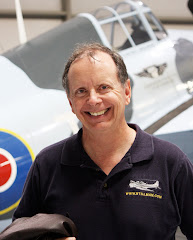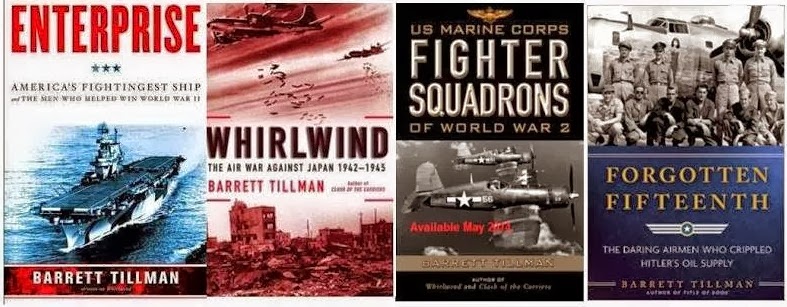A slightly shorter version appeared in American Thinker, March 24th.
https://www.americanthinker.com/articles/2022/03/the_nofly_debate.html
Should NATO establish a no-fly zone over Ukraine?
Aside from public airing of prospects for sending aging MiG-29 fighters to Ukraine, the larger question involves other nations establishing controlled airspace to reduce Russian airpower’s effect during its invasion.
The question turns on prospects for a clash of allied and Russian aircraft erupting into a wider conflict.
We have been there before. Repeatedly.
In November 1944 Italy-based American fighters attacked a Soviet road convoy in Yugoslavia. Accounts vary as to the cause: either a navigation error or the Russians’ failure to announce an unexpected breakthrough. In any case, the P-38 Lightnings mistook the Russian vehicles for German and strafed them. Reportedly among the dead was a general.
The Russian top cover descended, resulting in a dogfight that claimed two P-38s and four Yakovlev fighters.
Anticipating high-level problems, U.S. headquarters immediately sent the group commander Stateside. And sure enough, Moscow demanded his execution. However, Colonel Clarence “Curly” Edwinson retired as a brigadier general.
Throughout the Cold War, Communist fighters downed at least fifteen American aircraft, several in international airspace. Additionally, surface to air missiles (SAMs) downed U-2 pilot Francis Gary Powers, captured in Russia in 1960, followed by Major Rolf Anderson, killed in his U-2 over Cuba two years later.
No wars ensued.
American and allied air forces clashed with Soviet jet fighters throughout most of the three-year Korean War. At least six Russian planes were splashed by U.S. naval aircraft with four MiG pilots killed in one combat off Vladivostok in 1952.
Long after, Moscow acknowledged losing 335 planes and 120 aircrew among a total 299 personnel killed in Korea. Against orders, some Soviet MiG-15s were pursued to destruction at their sanctuaries in Manchuria.
No wider war ensued.
A much wider war did occur, of course, when General Douglas MacArthur’s notoriously sycophantic staff discounted intelligence of China preparing a massive offensive as Americans neared the border in 1950. The quilted tide flooded south, eventually with something over 200,000 Chinese killed or missing before the 1953 armistice.
The Soviet Union provided massive support to Hanoi during the long Vietnam War. The main contributions were jet fighters and surface to air missiles with technicians and trainers for each. The official Russian figure is sixteen deaths in Indochina from all causes.
China was even more active, especially with engineering and anti-aircraft units. Vietnam War scholar Merle Pribbenow places Communist Chinese casualties at 1,100 killed and 4,200 wounded through 1975.
No wider war ensued.
Soviet fighters destroyed a Korean Airlines jetliner off the Russian coast in 1983. Nearly 270 civilians died, including conservative Georgia Congressman Larry McDonald.
No war ensued.
No-fly zones have been enforced by coalition nations for longer than some readers remember. For 12 years, 1991 to 2003, Operations Northern and Southern Watch divided Iraq into thirds, protecting Kurds in the north and Shiite Muslims in the south, leaving the middle portion available to Saddam Hussein’s government.
But NFZs pose inherent risks to operators. In a bungled 1994 interception, F-15 Eagle fighters destroyed two U.S. Army helicopters with 26 fatalities from the U.S. and four other nations. In 1998 Saddam Hussein’s forces began firing on coalition aircraft in NFZs without effect though U.S. and British jets retaliated.
Northern and Southern Watch ended with the allied invasion of Iraq in 2003.
Operation Deny Flight was a 12-nation NATO exercise over Bosnia and Herzegovina from 1993 to 1995. The most significant action erupted in 1994 when U.S. F-16 Fighting Falcons shot down four Serb jets that had bombed a factory. Deny Flight expanded into Deliberate Force, authorized to attack a wider variety of targets.
In 2011 the U.N. approved a no-fly zone during the Libyan civil war, lasting from March to October. Mostly the U.S., Britain, Canada, and France launched aircraft and missiles against Muammar Qadhafi’s forces in that period and conducted a naval blockade. Six other nations contributed operational or logistics support but each assigned its own name; America conducted Odyssey Dawn while Britain launched Ellamy, etc.
Today, rather than patrolling fighters in Ukraine airspace, undoubtedly NATO long-range surface to air missiles (SAMs) would be considered splitting hairs in Moscow, as presumably the result would be the same—a reduction in Russian sorties against Ukraine.
NATO countries already have sent shoulder-mounted SAMs to Ukraine, most notably the U.S. Stinger that featured heavily in defeat of the Soviets in Afghanistan. Videos show Ukrainian Stingers destroying Russian jets and helicopters.
Uraine is almost the size of Texas, far larger than all of Iraq which is more akin to Wisconsin. But maintaining a nation-wide NFZ might dilute or fracture the enormous international support for Ukraine. A Ukraine NFZ would require a massive multi-national effort including tankers and round the clock maintenance-logistics. The huge majority of civilian casualties are inflicted by artillery, cruise and ballistic missiles. Therefore, NFZ aircrews would have to find those launchers but many are in Russia and Belaruss.
Assuming a Ukrainian NFZ, certainly the Russians would ramp up their anti-air capability, perhaps prompting the U.S. to deploy stealth F-22 Raptor with trouble-plagued F-35 Lighting II fighters, and even B-2 strategic bombers. However, stealth is no guarantor. In 1999 a clever Yugoslav missile battery shot down an F-117 stealth “fighter”—actually a subsonic attack aircraft with no air to air capability—and reportedly damaged another.
Consequently, even committing stealth jets to Ukraine would require jamming aircraft to escort the strikers, and only the U.S. Navy retains that capability with its EF-18 Growlers. Washington might be reluctant to show its stealth and electronic warfare hands in an arena removed from American interests.
Retired Admiral Leighton Smith commanded NATO forces in Bosnia 1994-1996, being knighted for his leadership. He has rare insight to no-fly zones, as he had been involved in Provide Comfort, recalling, “There was no opposition in Iraq. We had complete control of the air and made iron-clad promises to the Iraqis that any violation, or offensive action, would be dealt with immediately and with considerable force.”
Of a Ukrainian no-fly zone Admiral Smith says, “I don't know how you would control a NFZ in Ukraine without getting into it with the Russians. A very tricky thing to do unless we declare a humanitarian corridor, and patrol that to allow aid to flow unimpeded. Even then, maintaining an NFZ would be tough. I can't imagine what the rules of engagement would be!”
Admiral Smith’s air corridor is reminiscent of a concept from the dawn of the Cold War. In 1948 Russia blocked allied land access to Berlin,100 miles inside the Soviet zone of occupation. But rather than abandon their sectors of the German capital, the western powers launched aerial relief despite harassment by Russian fighters. Lieutenant General Curtis LeMay, commanding U.S. Air Forces Europe, oversaw the 11-month Berlin Airlift, and no wider war developed.
But as always in comparing history to the present, “that was then and this is now.”



